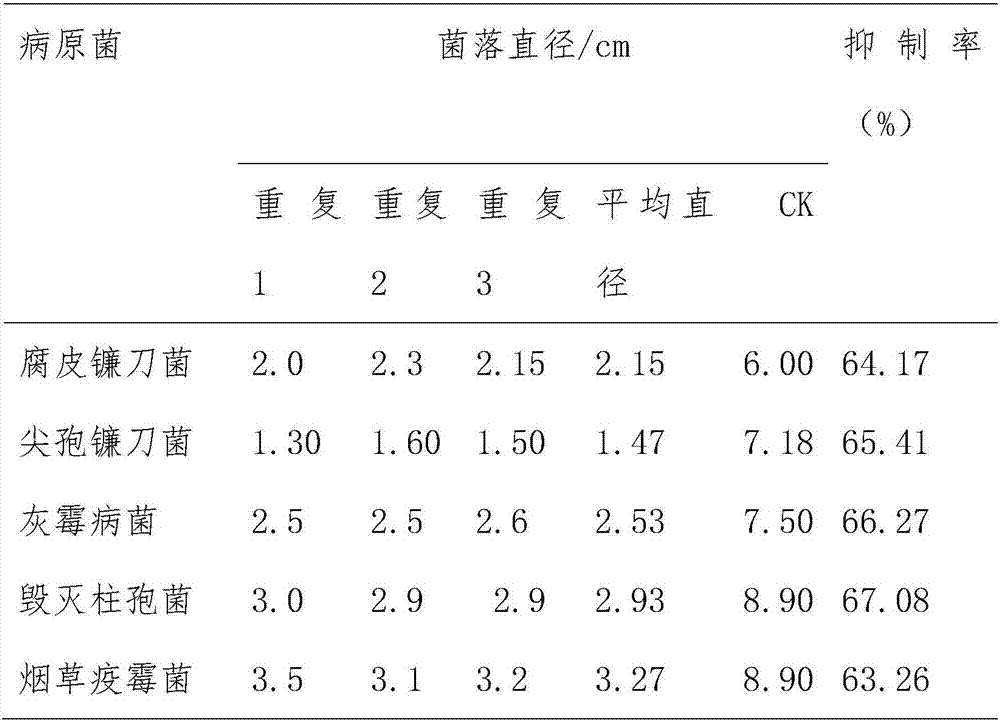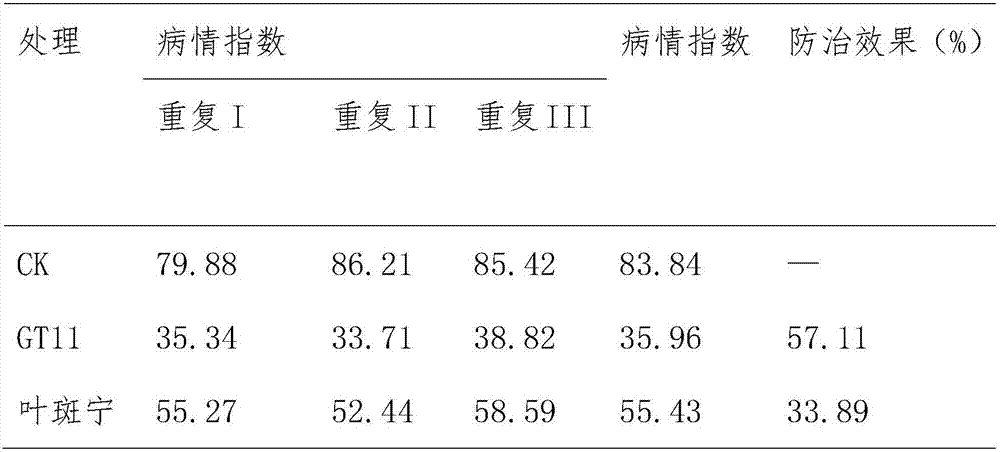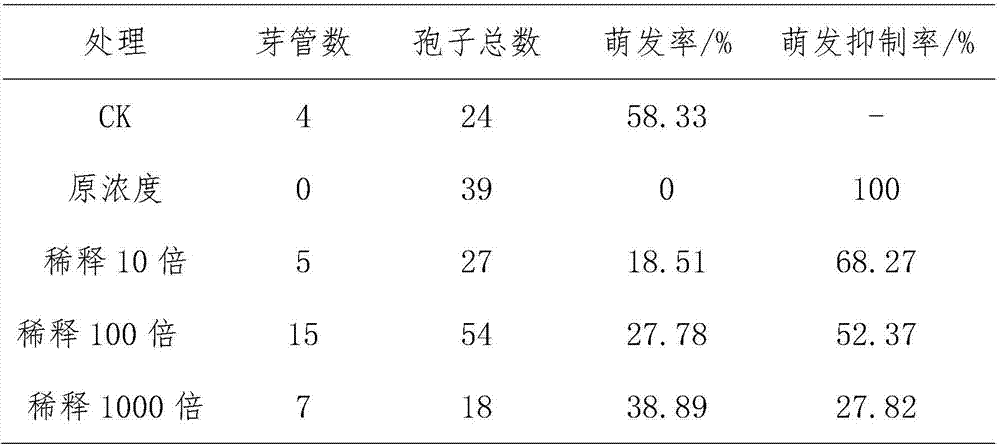Bacillus belleus GT11 and application thereof
A technology of Bacillus Velez and Bacillus, applied in the direction of application, bacteria, fungicides, etc., can solve the problems of soil structure damage, failure to achieve disease control effects, etc., and achieve good comprehensive properties, efficient control effects, and good bacteriostasis effect of effect
- Summary
- Abstract
- Description
- Claims
- Application Information
AI Technical Summary
Problems solved by technology
Method used
Image
Examples
Embodiment 1
[0028] Preparation of Bacillus velezensis GT11 Aqua
[0029] (1) Bacteria culture
[0030] a. test tube culture (below are weight percentages)
[0031] Put NA medium (5g of peptone, 10g of sucrose, 1g of yeast powder, 3g of beef extract, 17-20g of agar) into a test tube, make up to 1000mL with distilled water, sterilize, make a plate, and inoculate Bacillus velei GT11 Strains, cultivated at 28°C for 48h.
[0032] b. Bacteria Shaker Expansion Cultivation
[0033] The plate seeds were inoculated on the NA medium of the eggplant bottle slant (the medium formula is the same as the above-mentioned step a), and cultured at 26° C. for 48 hours to obtain the eggplant bottle seeds.
[0034] (2) fermentation
[0035] The specific fermentation production process is as follows:
[0036] a. Preparation of seed suspension: wash the colony on the slope of the eggplant bottle with sterilized water to obtain the seed suspension;
[0037]b. Inoculation: the seed suspension is passed throu...
Embodiment 2
[0042] Preparation of Wettable Powder of Bacillus velezensis GT11
[0043] (1) prepare liquid biocontrol agent: with embodiment 1, obtain fermented liquid;
[0044] (2) Add filler: Put the fermentation hydraulic pressure into the storage tank, add diatomite (light calcium carbonate) as filler according to the following calculation formula, and stir for 30 minutes;
[0045] Adding amount of filler (kg)=[number of fermentation broth bacteria (100 million / ml) X tank volume (liter) X yield] / number of finished product bacteria-residue in fermentation broth (kg). Then, it is filtered by plate and frame, beaten, dried, crushed, and made into wettable powder for field use.
[0046] (3) Plate and frame filtration: use 2kg / cm 2 Press the material into the plate frame from the storage tank, filter through No. 7 filter cloth, adjust the pressure at any time, so that the bacteria content in the filtrate is not more than 0.2 billion / ml, and the filter cake and filtrate are obtained;
[0...
Embodiment 3
[0052] In Vitro Antibacterial Test of Bacillus velezensis GT11 on Inchi Fruit Root Rot
[0053] The media used are as follows:
[0054] KB medium (peptone 20g, dipotassium hydrogen phosphate 1.5g, magnesium sulfate heptahydrate 1.5g, glycerol 10mL, distilled water 1000mL; pH7.0);
[0055] PDA medium (potato 200g, agar 15g, glucose 15g, water 1000mL);
[0056] NA medium (peptone 5g, beef extract 3g, yeast extract 1g, sucrose 10g, agar 17g, water 1000mL, pH7.0);
[0057] 1. Bacillus velezensis (Bacillus velezensis) GT11 in vitro antibacterial test on Inki fruit root rot and other pathogenic bacteria
[0058] 1.1 Pathogens tested
[0059] Including Fusarium oxysporum, Fusarium solani, Botrytis cinerea, Cylindrocarpon destructans, Phytophthora parasitica var.nicotianae, etc., the above pathogens Provided by the Plant Pathology Laboratory of Plant Protection College, Yunnan Agricultural University.
[0060] 1.2 Test method
[0061] Activation of pathogenic bacteria: move the ...
PUM
| Property | Measurement | Unit |
|---|---|---|
| control rate | aaaaa | aaaaa |
| control rate | aaaaa | aaaaa |
Abstract
Description
Claims
Application Information
 Login to View More
Login to View More - R&D
- Intellectual Property
- Life Sciences
- Materials
- Tech Scout
- Unparalleled Data Quality
- Higher Quality Content
- 60% Fewer Hallucinations
Browse by: Latest US Patents, China's latest patents, Technical Efficacy Thesaurus, Application Domain, Technology Topic, Popular Technical Reports.
© 2025 PatSnap. All rights reserved.Legal|Privacy policy|Modern Slavery Act Transparency Statement|Sitemap|About US| Contact US: help@patsnap.com



